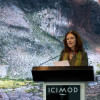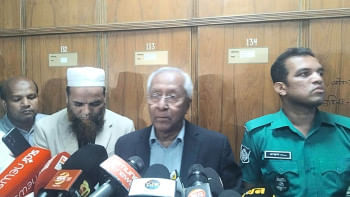Why we need a new climate finance approach

Most of the recent discussions on climate change in Bangladesh have been focused solely on funding. The world annually requires $4.6 trillion to reach net zero in greenhouse gas emissions by 2050, yet only 43.5 percent of this was spent in 2024. For adaptation, developing countries need $387 billion per year, but only 7.2 percent of that was made available in 2022. Therefore, climate funding is, indeed, crucial. My concerns, however, lie elsewhere.
Let's look at a few examples of why Bangladesh's motivation and interest behind all its funding dialogues do not make much sense. Over the last five years or so, the government, civil society organisations, and development partners have shown outstanding enthusiasm in promoting and mainstreaming youth involvement in climate action. The July uprising was supposed to prioritise young people's capabilities at the core of our development agenda. Despite these efforts, our latest climate budget for FY2025-2026 once again failed to allocate funds to the youth ministry. How much energy have our youth climate activists spent ensuring that Bangladesh moves away from its obsolete, decade-old climate budgeting style compared to the efforts they have invested in attending the Conferences of the Parties (COPs) across the world over the years? Do our youth genuinely believe they can influence global climate finance when they cannot move the needle in their own country?
Although we do not yet have a national policy on climate change, we have several recent action plans directly dedicated to climate action. Each of these time-bound documents has also estimated the budget required for full implementation: the Delta Plan 2100 ($37 billion during 2018-2030); the Climate Prosperity Plan ($89.72 billion, 2022-2030); the National Adaptation Plan ($230 billion, 2023-2050); and the Nationally Determined Contribution (NDC 3.0) ($116.18 billion, 2026-2035). Avoiding double-counting of activities in these plans, it is often declared in public forums that Bangladesh annually needs around $26 billion for climate action, with an 89.2 percent funding gap. Yet, we do not see any desperate or drastic measures from the government to reduce this enormous gap by improving transparency and accountability in public-sector fundraising and project management to build funders' confidence, or by effectively tracking and reporting fund flows and expenditure.
In response to the newly established Fund for Responding to Loss and Damage (FRLD), currently managed by the World Bank, Bangladesh may soon begin estimating how much money it will need by 2050—further widening the overall climate funding gap. It seems that we are moving rapidly away from our proud notion of being a resilient and prosperous nation under climate change, instead seeking compensation as a climate victim.
Furthermore, all our recent conversations have focused on how to tap into the FRLD. Between December 1, 2025, and May 31, 2026, the FRLD will seek its first round of proposals to disburse an initial $250 million pot for loss and damage actions, and Bangladesh may not be prepared for this.
On October 29, 2016, ICCCAD, ActionAid, NACOM, and CARE provided a clear outline, titled National Mechanism on Loss and Damage in Bangladesh, to initiate actions through appropriate institutions and governance. Nine years on, it has not been materialised despite several attempts. The establishment of the FRLD now appears to have sparked some motivation, as the government is planning to prepare a national framework on loss and damage, while several civil society organisations have revived discussions on the national mechanism. However, how the national mechanism will be linked to the national framework, and vice versa, remains unclear. Nevertheless, for loss and damage, Bangladesh's action has been to engage mostly in talks. Apart from that, a list of 43 loss and damage actions were included in the NDC 3.0.
Bangladesh must rethink its approach to seeking funds from UN-facilitated sources. It should also stop working solely around the COPs—climate change is a year-round reality for Bangladesh, not just an 11-day event in November. We must also ask ourselves: despite an annual climate funding gap of $23.2 billion and losing 1-2 percent of GDP to climate change impacts every year, how are climate-vulnerable Bangladeshis adapting to and tackling losses and damages by investing their own resources? The answer to that question could help us recalculate our climate finance needs and motivate us to expand our funding options more seriously.
Dr Haseeb Md. Irfanullah is an independent environment and climate change consultant and visiting research fellow at the University of Liberal Arts Bangladesh (ULAB). He can be reached at [email protected].
Views expressed in this article are the author's own.
Follow The Daily Star Opinion on Facebook for the latest opinions, commentaries and analyses by experts and professionals. To contribute your article or letter to The Daily Star Opinion, see our guidelines for submission.

 For all latest news, follow The Daily Star's Google News channel.
For all latest news, follow The Daily Star's Google News channel. 










Comments